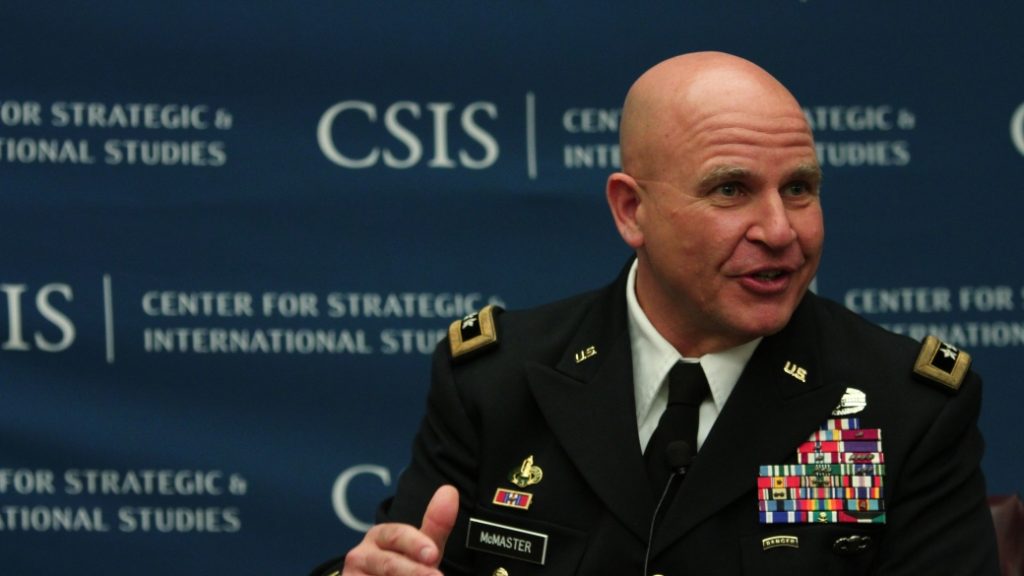Innovation
And other things that brief well
Marine Corps Gazette Volume 101, Issue 2
Author:
Capt Joshua Waddell
I am now thoroughly convinced there is something deeply wrong with the part of the Marine Corps occupying the I-95 corridor leading to the Pentagon. What has become painfully apparent to me is the drastic difference between the mindset of the Operating Forces and the Supporting Establishment. While I grant that, in the case of the former, the prospects of being shot, blown up, or otherwise extinguished tend to be wonderful motivators to constantly improve and perform, the Marine Corps Supporting Establishment is filled with senior officers whose backgrounds include extensive experience in combat within the Operating Forces. Why then is there such a divide between the organizational energy and innovative agility of our Marines and the depressive stagnation found within the Supporting Establishment?
I believe I know a big part of the answer: self-delusion.
Let us first begin with the fundamental underpinnings of this delusion: our measures of performance and effectiveness in recent wars. It is time that we, as professional military officers, accept the fact that we lost the wars in Iraq and Afghanistan. Objective analysis of the U.S. military’s effectiveness in these wars can only conclude that we were unable to translate tactical victory into operational and strategic success.1 As military professionals, it is not sufficient to offload the responsibility for these failures, at least in their entirety, to decision makers in Washington or in perceived lack of support from other governmental agencies. We must divorce ourselves from the notion that criticism of our performance is an indictment or devaluation of the sacrifices our Marines made on the battlefield. Like many of you, I lost Marines in the “Long War” as well. It has taken several years of personal struggle to arrive at the conclusions I am writing now. What makes this necessary, however, is that if you accept the objective, yet repulsive, fact that our Marines died on the losing side of our most recent wars, you cannot then accept that the status quo of the Marine Corps, and the larger defense establishment, is in an acceptable state of affairs. This is further compounded by future forecasts of conflicts with adversaries that are beginning to look like more like peers despite the self-aggrandizing “near-peer” label we assign them.2 We allow ourselves to look at our impressive defense budget and expensive systems and throw around hyperbole about the United States having the greatest military in the world. How, then, have we been bested by malnourished and undereducated men with antiquated and improvised weaponry whilst spending trillions of dollars in national treasure and costing the lives of thousands of servicemen and hundreds of thousands of civilians? Judging military capability by the metric of defense expenditures is a false equivalency. All that matters are raw, quantifiable capabilities and measures of effectiveness. For example: a multi-billion dollar aircraft carrier that can be bested by a few million dollars in the form of a swarming missile barrage or a small unmanned aircraft system (UAS) capable of rendering its flight deck unusable does not retain its dollar value in real terms. Neither does the M1A1 tank, which is defeated by $20 worth of household items and scrap metal rendered into an explosively-formed projectile. The Joint Improvised Threat Defeat Organization has a library full of examples like these, and that is without touching the weaponized return on investment in terms of industrial output and capability development currently being employed by our conventional adversaries.
More to the point, I am proposing a moratorium on our senior leaders using the word “innovation” in response to these challenges. I was privileged enough to spend time adjacent to our Nation’s “cradle of innovation” in central California. Frankly, it is embarrassing to compare what is being accomplished by private industry to what you see in the average Marine Corps innovation brief. I am convinced this is a self-inflicted wound. In our quest for fair competition and misguided desires to preserve a Cold War-era industrial base, we have created a Byzantine acquisitions system that privileges insiders (an objective affront to our Nation’s capitalist philosophy) and degrades institutional agility.
Despite variations of the word “innovation” occurring 18 times within the newest
Force Development Strategic Plan, these well-meaning policies are hollow without the corporate environment in which they can be successful. Our current structure calls for innovation, then bludgeons those initiatives with the full weight of the Program Objective Memorandum (POM) cycle combined with institutional lethargy and reactionary resistance to change. I am convinced we can create a structure that is more responsive to the real world requirements of a true global force-in-readiness. Instead, by repeatedly espousing the need for innovation in the Marine Corps, while refusing to foster the corporate processes which encourage industry engagement beyond defense insiders, we delude ourselves into believing in our parity with the capability possibilities of the modern age, and this, in turn, adds to the general malaise one experiences in the defense acquisition establishment.
It is worth noting that, over the past three decades, the wellspring of innovation in Silicon Valley did not happen in a vacuum. Like the Renaissance, certain conditions existed within the culture and regulatory environment that enabled the technological boom we now envy to occur. Therefore, it is not enough to issue mandates for the department to innovate. Rather, the more consequential, and what I would argue is the more difficult, course of action is demanding an organizational ecosystem that organically fosters innovation and allows innovative concepts to grow and mature. This isn’t to say that a storied and disciplined military organization such as the Marine Corps should strive to replicate the corporate oddities found at some Silicon Valley firms. Rather, the Marine Corps must carefully examine the inception-to-implementation vector for innovative concepts and the supporting regulatory and statutory mandates that affect them. In much the same way we would track adversary indications and warnings in a threat network, we must track the flow of ideas within the Corps to determine why so many end up dead on arrival. This must also come with a cultural recognition that, outside of the Constitution and Title 10 authorities, there are no “bibles” in the Marine Corps. Every order, regulation, or business process is malleable—it simply takes bold leadership to recognize and implement these necessary changes.
To complement this argument, one must acknowledge the capabilities of the phenomenal young men and women we recruit to be Marines. There is no reason that the Marine Corps, with a work force that is, on average, better educated and disciplined than their civilian counterparts, can’t replicate the advances in just-in-time logistics perfected by UPS and Amazon or the austere networking capabilities deployed by Cisco, to name a few. By their age alone, it is laughable to think that they would have difficulty adapting to new IT and C2 systems since they have likely spent every day of their lives connected to a smartphone and have more Internet protocol networking knowledge as a result of online gaming than many of our own C2 policy makers.
As an isolated example, it is shameful that our company commanders are buying Android tablets with their own money for their units to use with Special Operations Command (SOCOM) open-source software to conduct en-route C2 in our SPMAGTF-CR units while HQMC hides behind a log-jammed and unnecessarily restrictive certification process. Here, I would invite critics of this particular effort to explain how they foresee tactical adversaries breaking advanced encryption standard 256 encryption and other commercially available cybersecurity measures on a protected, yet unclassified, network as being a risk more unacceptable than our infantrymen being shot or our Ospreys being downed. However, if the U.S. Army’s 82d Airborne and 75th Rangers have outpaced our capacity for expeditionary communications (which they have), then the Marine Corps should be rethinking its role as the Nation’s first choice as its crisis response force. Yet, we are satisfied with ourselves for finally providing the PRC-117G to the Operating Forces while our adversaries outmaneuver our C2 infrastructure with cell phones, third-party applications, and open source encryption. Only through aggressive HQMC leadership and the adoption of a sweeping campaign of modernization that favors commercial and government off-the-shelf solutions will the Marine Corps begin to come back up on par not only with the civilian sector but with our fellow expeditionary units within the DOD.
The relative small size of the Operating Forces is one of our greatest strengths in that it should allow for similar agility to that enjoyed by our SOCOM brethren. Their aggressive utilization, not bypass, of the Joint Capability Development and Integration System (JCIDS)process should embolden capability developers to be more aggressive and less risk averse in meeting battlefield requirements.
Additionally, I propose a moratorium on the phrase “fiscally constrained environment,” an often used term in the context of hand-wringing regarding the comings and goings of Congress and fluctuations in the defense budget. Ignoring for a moment the fact that “constrained resources” is a constant for every industry and indeed every biological organism on the planet, we must disabuse ourselves of this sentiment because of its impact on the mindset of acquisition professionals and capability developers: seemingly offloading the ownership of fiscal responsibility to uncontrollable externalities. From an internal perspective, we must remind ourselves that the DOD, to include the Marine Corps, is still incapable of being successfully audited.3 4 5 To say nothing of the frequent cost overruns, acquisition nightmares, and ever-expanding overhead that frequent the pages of the national news services, it is unthinkable that a successful corporate entity can be able to operate without having its books fully in order. This is separate and distinct from the moral implications of squandering the tax dollars offered to us in good faith by the American people whom we are sworn to defend.
Taking an external view of our so-called “fiscally constrained environment,” it is illustrative to put our budget in comparative terms. The President’s budget for the Department of the Navy in FY16 was $161 billion, with an additional $7 billion in funding for overseas contingency operations. This year, the budget for the entire Russian military, the one that embarrassed our national policies in Ukraine and Syria, was 3.1 trillion Russian rubles, which comes out to roughly $42 billion by the exchange rate at the time of this writing.6 Even adjusting for the collapse of the ruble (ironically giving the United States, a nation with strategic cash reserves in the international exchange currency, more buying power), their previous modernization budgets roughly meet less than half of the Department of the Navy’s corresponding yearly budgets. This is the same Russian military whom the RAND Corporation has estimated would be unstoppable in an initial conventional conflict in the Baltic States, even against the combined might of the NATO forces stationed there.7 Given the generous funding the American people have bequeathed us to provide for the common defense, is it so unreasonable to seek an efficient frontier of that resource’s utility?
During my time red-teaming emerging joint concepts with Joint Staff J-7 and engaging in the daily business of MCCDC, the themes discussed above seemed to echo across the DOD. However, while we are quick to offer speculations as to what our third offset strategy might be or how we might conduct manned-unmanned teaming, defense professionals consistently take an impotent tone in discussing the less glamorous organizational ails of the department. It is here that the bold leadership we associate with military virtue is so desperately needed. As a starting point for discussion, I propose the following immediate changes to our supporting establishment:
Aggressive execution of the JCIDS to favor open purchase of commercial off-the-shelf and government off-the-shelf materiel in order to catch up to the current defense state of the art while independently assessing future force requirements. While the JCIDS process is not inherently broken, its usage among the various stove-piped HQMC agencies is cripplingly inefficient. Consolidation of major acquisition and capability development commands into a streamlined structure could eliminate key delays in the execution of this established process. Business process reengineering should be undertaken to eliminate common points of friction, whether they be people or processes. Additionally, we must ask ourselves the hypothetical question, “If Google bought a military tomorrow, what would it look like?” We have focused on modernization through the lens of analogous programs (think ACV vice AAV) rather than expanding our conceptual realm of possibilities. We should employ what physicists would call “first principals” and hypothesize what true modernization would look like for the Marine Corps outside of the framework of past assumptions. Here again, the relative small size of the Corps is actually a benefit in that we can outfit and reorganize ourselves with far greater agility than our other conventional brethren in the DOD. Otherwise, we will be like the Belgian defenders relying on traditional forts and castles in the age of railway siege guns at the onset of the First World War.
Immediate Marine Corps-wide limited audit with the goals of identifying duplication of effort between existing structure and/or contractor support as well as reviewing all established programs, JCIDS or otherwise, with multi-year funding over $250,000 for gross lack of performance. Marine Corps organizations should be forced to reconcile the position descriptions and billets of their structure and find redundancies between structure elements and between salaried personnel and contract personnel. There is no reason we should be paying twice for the same work or, as is often the case, paying government personnel for work that they have instead outsourced to more capable contractors for tasks within the government worker’s job description. I would be willing to bet that a savvy staff officer with access to these position and billet descriptions as well as contracting line items could save the Marine Corps millions of dollars by simply hitting Control+F (find all) on his keyboard, querying key tasks, and counting redundancies. Additionally, all funded programs should be audited for gross cost and schedule overruns and their program officers held accountable for lack of performance. This problem is most glaring in our information technology programs where a system can be allowed to be overdue by years while not being able to deliver on the requirements set forth in the original programming documents while costing the service millions of dollars. These steps are an absolute minimum to begin to earn back the good faith and confidence of the American taxpayers. It amazes me that the same Marine Corps that will summarily fire a company commander because an attachment fell off the rifle of one of his 183 Marines and was lost will then treat the systematic fraud waste and abuse inherent in our headquarters and acquisitions establishments as the cost of doing business and “just the way things are.”
Immediate reform in the government civilian positions within HQMC is needed to ensure all general schedule (GS) employees are required to follow a diversified career path rather than allow civilians to attain
de facto tenure within the existing structure. Commands must be required to both recompete and review/update 20 percent of position descriptions for civilian employees, staggered annually, in order to prevent stagnation. This will allow existing employees to serve at least four years in their designated position with the option to recompete for their current position should that position description remain generally the same. Likewise, it would allow those employees to compete for another lateral or higher position as they come available. This will ensure the retention of corporate knowledge beyond the typical PCS timeline of their uniformed counterparts while providing a mechanism for organizational evolution. This should be done in such a manner as to allow qualified defense civilians the opportunity for true career advancement while ensuring all allotted structure serves in the best interest of the Marine Corps. While it is critical to maintain faith with our defense civilians, the greater imperatives of national security require the Marine Corps to ensure it always maintains the most highly qualified workforce possible. As such, efforts should be made to recruit STEM and managerial talent from the entry to executive levels. While prior military service can be an asset, it can also be a hindrance to organizational change. Our civilian headquarters billets should not be, as one analyst recently described it to me, akin to a “no colonel left behind” program.
Reform of the allotment of Special Education Program (SEP) billets to include training at notable civilian institutions with strong STEM and business management programs. While the Naval Postgraduate School does an admirable job, there is an opportunity to see cost savings in engaging with select public higher education programs while reducing the overhead of maintaining an entire university in Monterey, California. Instead, these Marines could augment existing ROTC programs while bringing a more diversified academic experience back to the Marine Corps. Additionally, there must be a service-wide review of billets coded to specific military operational specialties produced from the SEP pipeline to ensure the optimal allocation of officers with specific technical and managerial skills to their appropriate billets. As it currently stands, the occupation fields for SEP billets are misaligned to their current billet assignments in a significant number of cases.
Reform of the manpower model to recruit the necessary talent for 21st century warfare. It is unreasonable to expect to recruit and retain highly qualified individuals while offering compensation at conscript/poverty levels.8 While current education benefits are generous, the overall compensation for enlisted ranks is insufficient to ensure the maintenance of a professional NCO corps in the 21st century. Cuts to overhead in military medicine, continuing reform to pension programs, and reductions in non-critical structure would fund these increases to more competitive levels. Marines will continue to reflect all that is best in soldierly virtue due to the ethos of the Corps. However, with continued deployments to conflicts without end and with competitive employment options for skilled labor in the civilian force, to include private military firms, we can’t expect our most highly talented Marines to stay with the Corps simply for the love of the game. Nor should we expect that the Marines whom we have incentivized with a time horizon in the form of a lifetime pension rather than meaningful career goals be inclined to take risks that are in the best interests of the institution. This is instead incentivizing “playing it safe and making it to 20.”
Establish a Marine Corps Warfighting Laboratory rapid prototyping lab aboard Marine Corps Air Ground Combat Center, Twentynine Palms, or Marine Corps Air Station, Yuma, and interface directly with the newly formed Defense Innovation Unit—Experimental and relevant industries and start-ups nationwide. The availability of facilities and ranges to conduct tests and evaluations while better positioning military innovators near high-tech industry clusters would allow the Marine Corps to rapidly test new equipment, both lethal and nonlethal. This lab should also be directed to take on the costs of certification and defense policy compliance in the cases of onboarding technology from companies outside the defense establishment. Easing this regulatory barrier to entry will foster more open and fair competition among defense suppliers which will result in eventual savings being passed along to the Marine Corps.
Form a Marine Corps sovereign wealth fund to replace the need for OCO spending in the future. This fund would be implemented simultaneously with modifications to congressional budgetary law requiring the complete expenditure of a given years’ fiscal budget. Incentivizing managers to find efficiencies in their programs and budgets and passing those savings to the fund will grant the Marine Corps operational responsiveness in the face of crises in the form of operational or capability requirements that far outpace the legislature’s ability to approve a defense authorization act or a president’s budget. This would be sold to Congress as a multi-year cost savings strategy with the potential to curb the initial costs of major deployments in the future. This fund could also be tapped at the request of the Commandant for the rapid acquisition of capabilities designated critical and unforeseen in a typical fiscal year’s funding allotment. I offer Norway’s national sovereign wealth fund as a potential model for this much smaller fund.
Here’s the reality: we have a headquarters establishment that has grown too comfortable. When I watch entrenched civilians treat orders from Marine Corps generals as minor annoyances as they wait out that officer’s PCS timeframe, or observe officers deferring executive action to loosely organized integrated planning teams which spend their first year simply attempting to agree on their own charter, I begin to doubt the objective effectiveness of our headquarters. Only aggressive executive action on the part of emboldened and passionate leaders, both military and civilian, will be able to break the gridlock we currently face. If we recognize our recent failures and the coming challenges to the force, this becomes a moral imperative. A military department charged with the duties of the Nation’s crisis response force is a department that must be on permanent war footing. Our supporting establishment’s leaders should execute aggressive and invasive leadership throughout their organizations to ensure the same fighting spirit we find in our forward deployed Marines exists in the hallways of the Pentagon and in Quantico.
I have watched Marines charge headlong into enemy fire and breach enemy defenses with the enemy’s own captured IEDs in order to engage in close combat. This same fighting spirit from which we draw so much pride must be replicated by our senior leaders in leading comprehensive reform of our Corps’ capabilities and in creating a supporting establishment truly capable of fostering innovation. As the Marine Corps aggressively pursues force structure changes in the coming years, I implore our leaders to address the organizational culture of our headquarters establishment. Much like the service’s shift to maneuver warfare and the development of
MCDP 1, Warfighting, (Washington, DC: HQMC, 1997), following failures in Vietnam, we have an opportunity to enact meaningful changes to the way the Corps conducts force development as well as force employment functions while the lessons learned from recent conflicts are fresh in our minds. Otherwise, we will return to a comfortable business-as-usual mindset while we delude ourselves with hollow phraseology that briefs oh so well.
Notes
1. David Rothkopf, Rosa Brooks, Kori Schake, and Tom Ricks, “‘We Fail Better’ Should Not Be the Motto of the U.S. Military,” podcast audio, accessed at
https://foreignpolicy.com.
2. David A. Shlapak and Michael Johnson, “Reinforcing Deterrence on NATO’s Eastern Flank: Wargaming the Defense of the Baltic,” (RAND Corporation, 2016).
3. Information accessed at
http://www.defensenews.com.
4. Information accessed at
http://www.gao.gov.
5. Information accessed at
http://www.reuters.com.
6. Franz-Stefan Gady, “Russia’s Military Spending to Increase Modestly in 2016,”
The Diplomat, (10 November 2015), accessed at
www.thediplomat.com.
7. Shlapak and Johnson.
8. Information accessed at
http://www.economist.com.
Capt Joshua Waddell
Capt Waddell is an infantry officer who was stationed in Sangin, Afghanistan, with 3d Bn, 7th Marines, in 2010 and 2011. He has a master’s of science in information technology management from the Naval Postgraduate School.
https://www.mca-marines.org/gazette/2017/02/innovation





